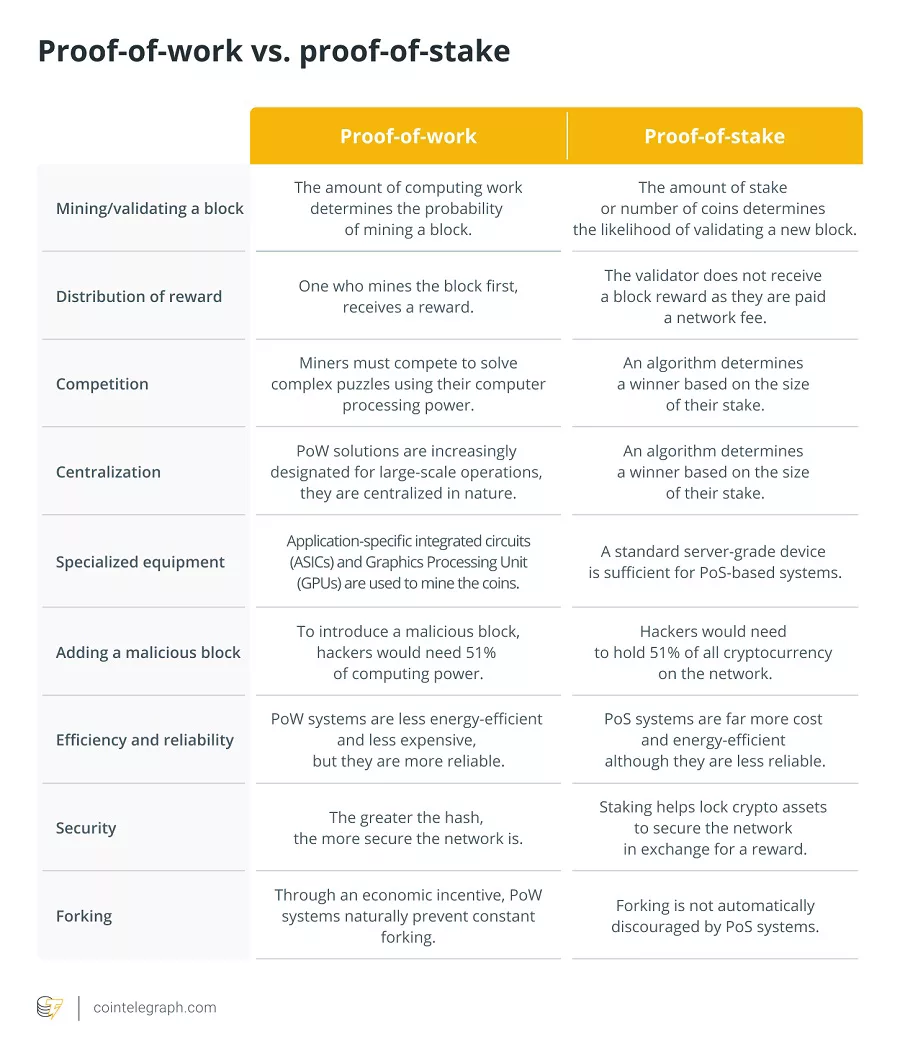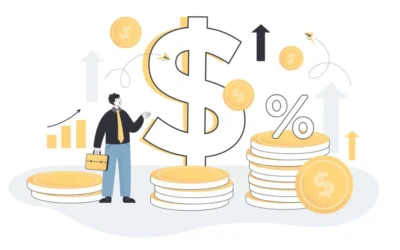– Proof of Stake (PoS) blockchains incentivize use and development.
– Proof of Work (PoW) blockchains are slow and energy intensive.
Blockchains
A blockchain is a decentralized, distributed digital database that uses cryptographic technology to operate securely and efficiently. The data is stored in blocks, thus creating numerous immutable blocks that are linked together as more data is recorded.
In contrast, centralized computer databases have a single point of failure because they are not distributed worldwide.
The two most common types of blockchains are Proof of Stake (PoS) and Proof of Work (PoW). Most investors and consumers prefer PoS blockchains versus PoW because PoS chains incentivize developers to build on the chains, people to use the chains, and investors to invest in the chains. Furthermore, PoS chains consume a lot less energy than PoW chains.
We prefer Proof of Stake blockchains and that’s why we invest in them via crypto exchanges and crypto funds.
Proof of Stake
Proof of Stake blockchains use validators as a consensus mechanism. Validator nodes, which are computer servers that can be owned and operated by individuals or businesses, verify and approve blocks on the chain. This keeps the chain operating harmoniously. Validators are rewarded with payments in the chain’s native token for their good work while validators acting maliciously get penalized.
Operating a validator node is challenging, so most investors prefer staking, whereby delegating their cryptos to a validator in return for a percentage of the rewards that a validator receives from the blockchain. These rewards are in the form of in-kind payments and can, at times, exceed 100% APY.
Proof of Stake Opportunities
Ethereum (ETH), Cosmos (ATOM), Binance Smart Chain (BNB) and Solana (SOL) are some of the largest Proof of Stake chains by market cap. These blockchains’ tokens, or coins, can be purchased and staked at crypto exchanges like Binance or Coinbase. Some digital assets funds, or crypto funds, also specialize in staking strategies.
Proof of Work
Proof of Work blockchains like Bitcoin use a consensus mechanism where computers, or “miners,” compete to be the next entity to verify and approve a block on the blockchain. If they succeed, they get rewarded with an in-kind payment. This process is energy intensive and doesn’t incentivize people to invest in a chain’s native token like Proof of Stake blockchains, so developers have switched to building Proof of Stake blockchains.
Proof of Work Blockchain Opportunities
Bitcoin (BTC) and Dogecoin (DOGE) are some of the largest Proof of Work chains by market cap. These blockchains’ coins, or cryptocurrencies, can also be purchase at crypto exchanges like Binance or Coinbase. Some crypto hedge funds also specialize in investing in Proof of Work blockchain coins.

This article may be republished online or in print under Creative Commons license CC BY 4.0; Proper attribution and link to our web site are required. View details.
RSS feed
Image by vectorjuice on Freepik
The REDI Financial Movement
Retire Early with Digital Investing, or REDI, is a financial movement created by Profit Spotters to attain financial freedom and early retirement via digital investing. Digital investing is the process of using… continue reading
What Are Digital Assets?
Overview:- The term "digital assets” is typically used in reference to blockchain technologies and assets like cryptocurrencies, tokens, staking, perpetual contracts and smart contracts. What Is a Digital Asset? A digital asset is a type of virtual property or...
Investing in Digital Asset Management Funds
Overview:- Digital asset funds typically outperform traditional investments like the S&P 500 and Dow Jones and can be a great investment option for family offices, institutions and accredited investors.Digital Asset Fund Investments Investing...
How to Start Digital Investing
Where to Start Digital Investing Digital investing is the process of using digital technologies to invest in digital assets. Digital investing provides investment opportunities—such as cryptocurrencies, tokens, staking, validator nodes,...
Social Media
Profit Spotters is a digital investing research firm, financial blog, and the creator of the REDI financial movement (Retire Early with Digital Investing). Content on this site is for general informational, educational or entertainment purposes. We do not offer financial or legal advice. Opinions are ours. Images by Freepik and Iconscout. Some links on this site are advertiser or affiliate links that help us earn a commission and operate the site free of charge for visitor like you. By using this site or subscribing to our newsletter you agree to our Terms.





